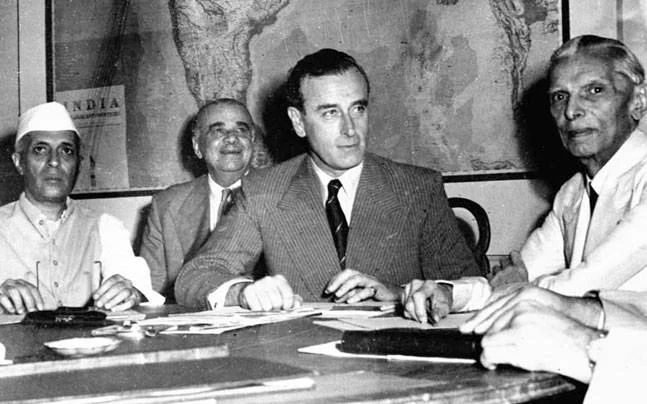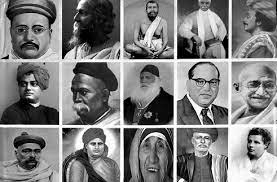- Courses
- GS Full Course 1 Year
- GS Full Course 2 Year
- GS Full Course 3 Year
- GS Full Course Till Selection
- Answer Alpha: Mains 2025 Mentorship
- MEP (Mains Enrichment Programme) Data, Facts
- Essay Target – 150+ Marks
- Online Program
- GS Recorded Course
- Polity
- Geography
- Economy
- Ancient, Medieval and Art & Culture AMAC
- Modern India, Post Independence & World History
- Environment
- Governance
- Science & Technology
- International Relations and Internal Security
- Disaster Management
- Ethics
- NCERT Current Affairs
- Indian Society and Social Issue
- NCERT- Science and Technology
- NCERT - Geography
- NCERT - Ancient History
- NCERT- World History
- NCERT Modern History
- CSAT
- 5 LAYERED ARJUNA Mentorship
- Public Administration Optional
- ABOUT US
- OUR TOPPERS
- TEST SERIES
- FREE STUDY MATERIAL
- VIDEOS
- CONTACT US
Comparative Table of British Constitutional Acts (1858– 1947)
Comparative Table of British Constitutional Acts (1858– 1947)

CROWN RULE
|
Act |
Year |
All Key Provisions |
Significance |
|
Government of India Act |
1858 |
- Ended East India Company rule. - Transferred powers to the British Crown. - Created the Secretary of State for India, a member of British Cabinet. - Established a 15- member Council of India to advise the Secretary of State. - Abolished Board of Control and Court of Directors (double government). - Governor-General of India became Viceroy. - Viceroy became Crown’s direct representative. - Secretary of State- in-Council became a corporate body that could sue/be sued. |
Beginning of direct British rule. Centralized administration under Crown. |
|
Indian Councils Act |
1861 |
- Allowed Indians to be nominated as non-official members in legislative councils. - In 1862, three Indians were nominated (Raja of Benaras, Maharaja of Patiala, Sir Dinkar Rao). - Restored legislative powers to Bombay and Madras Presidencies. - Allowed creation of legislative councils in Bengal, NW Provinces, and Punjab. - Gave legal recognition to portfolio system introduced by Lord Canning. - Empowered Viceroy to issue ordinances during emergency (6- month validity). |
Initiated representative institutions and decentralisation. First inclusion of Indians. |
|
Indian Councils Act |
1892 |
- Increased number of non-official members in Central and provincial councils. - Maintained official majority in all councils. - Councils allowed to discuss budget and ask questions. - Allowed indirect election (without using the term "election"): members nominated by Viceroy/Governors on recommendation of bodies like |
First move toward representative government via indirect election. |
|
|
|
municipalities, chambers of commerce, universities. |
|
|
Indian Councils Act (Morley- Minto Reforms) |
1909 |
- Enlarged Central Legislative Council (from 16 to 60 members). - Increased provincial council size (non-uniform). - Retained official majority at Centre; allowed non- official majority in provinces. - Gave legislative councils power to ask supplementary questions, move resolutions on budget. - Introduced separate electorates for Muslims (first legal communal division). - Allowed representation for chambers of commerce, universities, zamindars. - For the first time, Indians were appointed to executive councils (e.g., Satyendra Prasad Sinha as Law Member). |
Expanded legislative participation. Introduced communalism in electoral politics. |
|
Government of India Act (Montagu- Chelmsford Reforms) |
1919 |
- Divided subjects into Central and Provincial. - Introduced dyarchy in provinces: → Transferred subjects (education, health, agriculture) handled by Indian ministers. → Reserved subjects (police, finance) retained by Governor and Executive Council. - Introduced bicameral legislature at Centre: → Council of State (Upper House), Legislative Assembly (Lower House). - Introduced direct elections. - Extended communal electorates to Sikhs, Christians, Anglo-Indians, Europeans. - 3 of 6 Executive Council members (excluding C-in- C) to be Indians. - Created office of High Commissioner for India in London. - Established Central Public Service Commission (1926). - Separated provincial and central budgets. - Provided for Statutory Commission after 10 years (led to Simon Commission). |
Brought dyarchy, bicameralism, direct elections, but failed to satisfy nationalist aspirations. |
|
Government of India Act |
1935 |
- Proposed All-India Federation of British Indian provinces + princely states. - Divided powers into Federal (59), Provincial (54), Concurrent (36) lists. - Residuary |
Most detailed and far- reaching act. Laid the framework of the Constitution, despite not creating federation. |
|
|
|
powers with Viceroy. - Abolished dyarchy in provinces and introduced provincial autonomy. - Introduced dyarchy at the Centre (never implemented). - Introduced bicameralism in 6 provinces (Bengal, Bombay, Madras, Bihar, Assam, UP). - Extended separate electorates to SCs, women, labour. - Abolished Council of India (1858). - Secretary of State advised by advisors. - Expanded franchise to ~10% of population. - Provided for establishment of: → Reserve Bank of India (1935) → Federal Public Service Commission (UPSC) → Provincial and Joint PSCs → Federal Court (1937). |
|
|
Indian Independence Act |
1947 |
- Ended British rule; declared India and Pakistan independent and sovereign from August 15, 1947. - Provided for partition into two dominions: India and Pakistan. - Abolished Viceroy; created office of Governor-General (appointed by King on dominion cabinet's advice). - Constituent Assemblies of India & Pakistan empowered to: → Frame constitutions. → Repeal any British law. - Dominions could legislate for themselves; British Parliament laws not applicable after 15 August 1947. - Secretary of State for India abolished; duties given to Secretary of State for Commonwealth Affairs. - British paramountcy lapsed; princely states could join India, Pakistan, or remain independent. - Provided for temporary governance under GOI Act 1935 (with modifications). - British King’s right to veto bills/reserve bills abolished. - Governor-General retained this right temporarily. - Governors and Governor-General made constitutional heads, bound by advice. - Dropped title "Emperor of India" from King’s titles. - Stopped British |
Marked India’s and Pakistan’s independence. Gave full sovereign power to Indians. Transitioned to Republic of India (1950) and Islamic Republic of Pakistan (1956). |
|
|
|
appointments to civil services; existing officers retained protections. |
|



